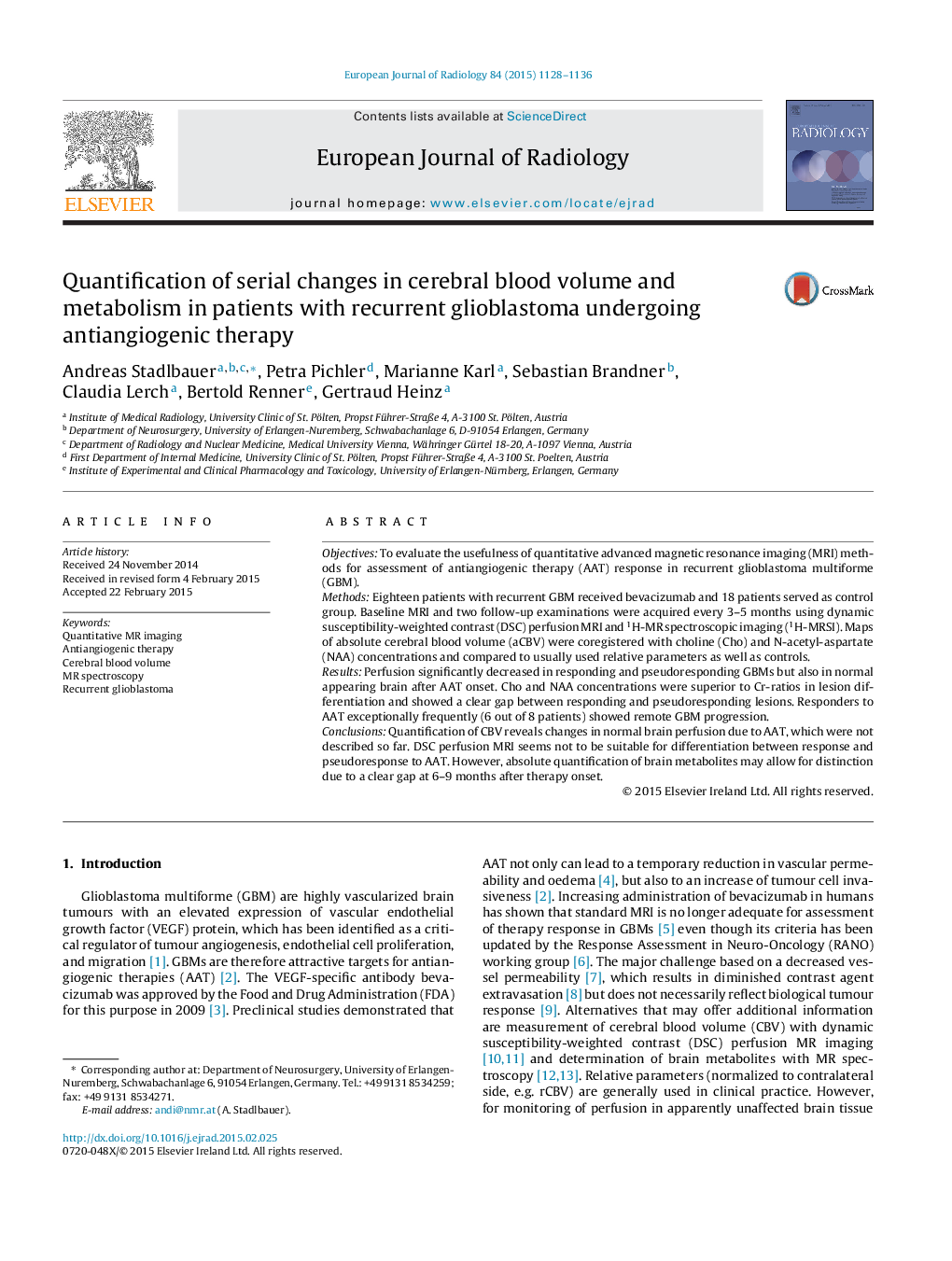| کد مقاله | کد نشریه | سال انتشار | مقاله انگلیسی | نسخه تمام متن |
|---|---|---|---|---|
| 4225112 | 1609753 | 2015 | 9 صفحه PDF | دانلود رایگان |
• Antiangiogenic therapy can lead to a decreased in CBV in normal brain tissue.
• Responding and pseudoresponding lesions to AAT showed a similar CBV decrease.
• Cho and NAA allowed for a distinction of responding and pseudoresponding lesions.
• Cr ratios are not suited for evaluation of antiangiogenic therapy response.
• Responders to AAT may have an increased risk for remote progression of the GBM.
ObjectivesTo evaluate the usefulness of quantitative advanced magnetic resonance imaging (MRI) methods for assessment of antiangiogenic therapy (AAT) response in recurrent glioblastoma multiforme (GBM).MethodsEighteen patients with recurrent GBM received bevacizumab and 18 patients served as control group. Baseline MRI and two follow-up examinations were acquired every 3–5 months using dynamic susceptibility-weighted contrast (DSC) perfusion MRI and 1H-MR spectroscopic imaging (1H-MRSI). Maps of absolute cerebral blood volume (aCBV) were coregistered with choline (Cho) and N-acetyl-aspartate (NAA) concentrations and compared to usually used relative parameters as well as controls.ResultsPerfusion significantly decreased in responding and pseudoresponding GBMs but also in normal appearing brain after AAT onset. Cho and NAA concentrations were superior to Cr-ratios in lesion differentiation and showed a clear gap between responding and pseudoresponding lesions. Responders to AAT exceptionally frequently (6 out of 8 patients) showed remote GBM progression.ConclusionsQuantification of CBV reveals changes in normal brain perfusion due to AAT, which were not described so far. DSC perfusion MRI seems not to be suitable for differentiation between response and pseudoresponse to AAT. However, absolute quantification of brain metabolites may allow for distinction due to a clear gap at 6–9 months after therapy onset.
Journal: European Journal of Radiology - Volume 84, Issue 6, June 2015, Pages 1128–1136
